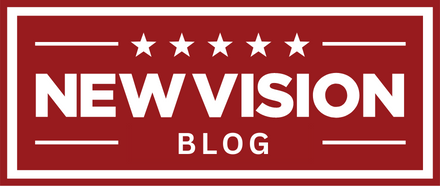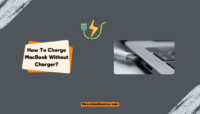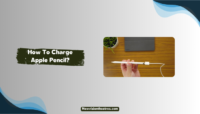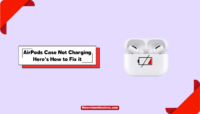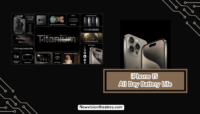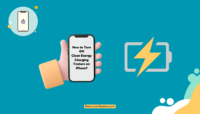Have you encountered an issue where you don’t know how to fix the charging issue with your iPad? Your iPad won’t charge when Plugged in, and the screen stays black. The battery not charging issue might be irritating.
However, fortunately, it’s not difficult to sort out why the iPad’s battery won’t charge when it is plugged in and fix it up in almost no time.
If you face this problem, the software on your computer and the AC adapter, cable, and port must be thoroughly examined before you can charge your iPad again.
In this article, we will look into why your iPad might not be charging when plugged in, and discuss the best possible steps to diagnose and solve this issue.
Reasons Why iPad Won’t Charge When Plugged In:
Almost daily, every iPhone or iPad owner recharges their device with a Lightning cable, USB-C cable, or wireless charger. However, occasionally, your iPhone will not charge, instead of the usual tone to indicate that charging has begun and a ‘Not Charging’ message gets displayed on the device.
If a few more attempts to plug in the charger again and solve the problem prove futile, it is time to find a new solution.
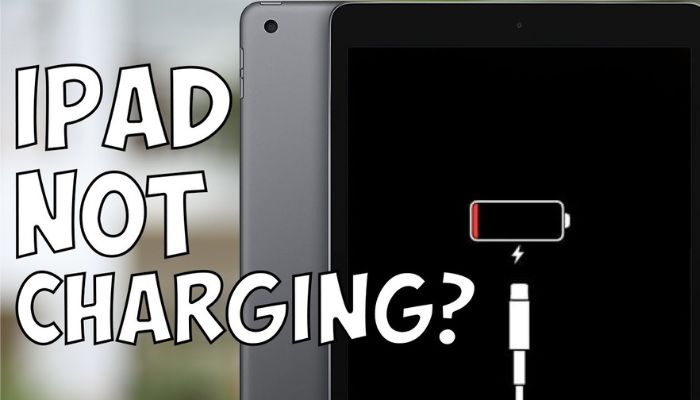
However, you need to identify the problem’s cause before finding the appropriate solution. The most common reasons your iPad does not charge when Plugged in are below.
- Defective Adapter – Your charger will look fine on the outside. However, it might be damaged. This is one of the most common reasons behind your iPad not charging when plugged in.
- iPadOS Software Issue – Software issues may occasionally cause the charging issue. A product bug may torment your iPad with issues hindering the charging capability. Outdated iOS software or newly installed third-party applications or updates may be the primary cause of the software glitch.
- Dusty Charging Port – Because of the steady utilization of iPads and hefting them around, a ton of residue, build-up, or different materials can advance into the port. Your iPad’s charging port could become clogged with dust and other trash, keeping it from charging. Your iPad may not charge while plugged in if dirt is in its charging port.
- Lightning Cable Fault – Your iPad won’t charge when plugged in if the lightning cable is damaged. Like the adapter, this damage is also not evident.
- Battery Issues – This can also be one of the reasons. Your iPad battery might be defective, which causes this problem. However, this is very rare.
How To Fix The ‘iPad Won’t Charge When Plugged In’ Issue?
Now that we know the possible causes of this issue, we need to look for solutions for them too. In this section, we have mentioned the top fixes for the problem of iPad not charging when Plugged in. Choose a solution that most likely fits the cause. If one of the solutions does not work for you, go to the next one.
1. Use A Different Power Source:
The device or its accessories don’t need to be faulty always. There might be some problem with the power source used to charge your iPad. Try connecting your iPad to a different power outlet or your computer to see if that helps.
Try plugging it into a different USB port if you already charge from your computer. You can also stop charging through your computer and see if the problem resolves.
If your iPad does not charge fully or stops charging at some percentage, try draining out all the charge from the device and proceed to charge it from the beginning.
2. Check The iPad’s Charging Port:
The iPad charging ports have around 24 pins interfacing with the lightning pin. Your iPad won’t charge when Plugged in if the pins are covered by debris.
Ensure you switch off the gadget first. Utilize a delicate cotton swab to rub around over the charging port to eliminate any noticeable dirt. You can gently remove anything that is stuck inside by using a toothpick.

3. Change The Lightning Cable:
It’s also possible that the iPad is having trouble charging due to the lightning cable. Maybe the cable gets turned or frayed due to being connected or turned off consistently, preventing the power to the iPad.
Whatever the reason, use a different Apple AC power cable to recharge your iPad. The MFi badge should be printed on the packaging of a charging cable that has been approved by Apple, as shown in the image below.
If the iPad charges, the cable must be the reason why your Apple iPad had stopped charging.

4. Check The iPad Power Adapter:
Examine the charger or AC adapter carefully to see if any obvious damaged, loose, or wiggled parts are present. If everything appears to be working properly, try a different iPad-specific charging adapter to see if your iPad starts charging immediately.

5. Force Restart Your iPad:
You can Force Restart your iPad if the charging issue persists. This is similar to unplugging a device and restarting it. If necessary, getting into recovery mode and reinstalling iOS or iPadOS is also part of the procedure.
If your iPad does not have a home button, press and release the Volume Up button and then the Volume Down button. Next, press the side button until the Apple logo appears, and your device will restart.
If your iPad has a home button, press both the home button and the Power button simultaneously for about 30 seconds until the Apple logo appears.

6. Update Your iPad:
Pending Software Updates can also affect the charging of the device. If your iPad still has some charge left, you can update your device through the software.
Go to the Device Settings. Click on the General section, scroll to the Software Updates section, and check for any pending updates. If an update is yet to be installed, proceed with the steps. After the Software updation, your device will restart fresh, and you can try charging your iPad again.
7. Factory Reset Your iPad:
This is the option you must consider as one of the last resorts if all the above ones do not work for you. You can Factory reset your iPad. This will convert it into a fresh device like any new iPad.
Most likely, the problem of your iPad not charging while plugged in must be resolved after this. To reset your iPad, follow these steps:
- Go to the device settings and tap on General.
- Scroll down to find the Reset option. Click on ‘Erase All content and Settings’.
- You might be asked to enter your device passcode or Pattern. Enter it and proceed to the final confirmation to Erase All Data.

You can try plugging in the charger after the factory reset is completed.
8. Contact Apple Customer Care:
If all the steps mentioned above proved to be futile and could not resolve your problem, the only option left is to contact Apple Customer Care. Make sure to check the warranty of your iPad.
If AppleCare still covers your device or has the standard one-year warranty, there is a good chance that Apple will repair it for you without charging you anything. You can contact Apple customer care online or visit the nearest Apple store. If your device is old and the warranty period is over, you can go to any other trusted Mobile repair shop for the repair.

Frequently Asked Questions:
You can enable Airplane Mode on the iPad to enhance charging and lower the device’s brightness.
Yes. Too much heat or cold can affect your iPad’s charging. Your iPad will normally charge when the temperature is between 32 and 95 degrees Fahrenheit. Keep your iPad out of direct sunlight and place it somewhere where the temperature is optimum.
If you think your iPad is dead and does not turn on, you can try a force restart on the device. If that does not work, you can plug in the charger and leave your iPad for overnight charging.
Conclusion:
If your iPad does not charge properly when plugged in, do not panic. A broken cable or adapter, a dirty charging port, issues with the software, or problems with the battery could be to blame for the problem. Most often, you can resolve this issue on your own.
In this article, we have mentioned the causes behind this issue and also the ways you can opt to solve it. You can change the lightning cable or adapter, alter the power source, perform a force restart, and try cleaning the charging port. If nothing helps, you can even perform a factory reset or contact Apple Customer Service.
We hope this article clears your doubts regarding the topic. Feel free to reach out through the comments if you have any more queries or other suggestions!!
Hello, I’m Sreelakshmi, a content enthusiast with 6 years of experience. I’m dedicated to addressing critical issues within OTT content through insightful articles, using my words to spark discussions and provide clarity.
